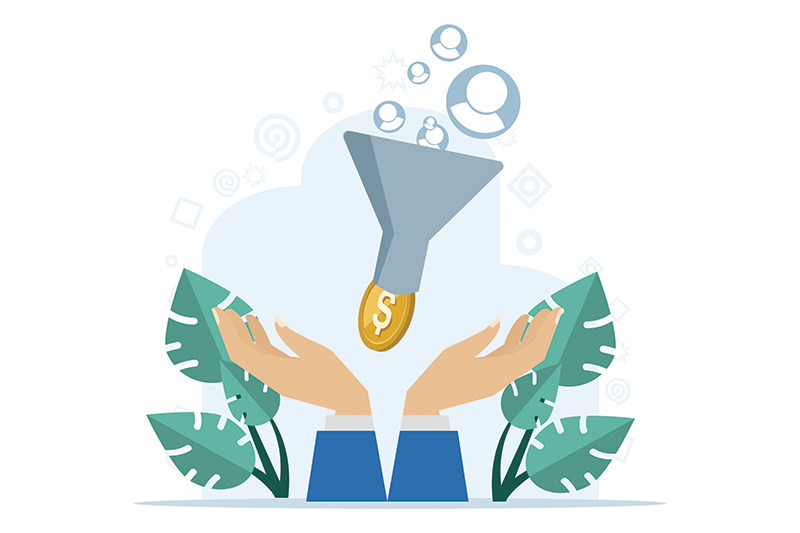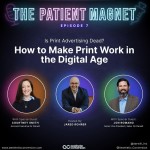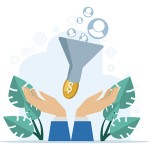Full-Funnel Marketing Strategies and the Customer Experience
Did you know that understanding the customer journey is the key to building a powerful full-funnel marketing strategy? The customer journey comprises every interaction a consumer has with your brand, from initial discovery to post-purchase engagement. Each interaction a consumer has with your brand shapes their perception and influences their purchase decision.
By mapping out this journey and strategically aligning marketing touchpoints (interactions such as website visits, social media engagement, email marketing, and paid advertising), you can seamlessly guide customers through each stage of the purchase funnel, boosting conversions and long-term loyalty.
Understanding the Customer Journey
A successful full-funnel marketing strategy begins with customer journey mapping. Mapping out the customer journey will help you understand how your prospects interact with your brand at each stage of the funnel.
The customer journey and corresponding purchase funnel will be different for each business. This is based on multiple factors, including the type of product or service you offer, the behavior of your target audience, and the marketing channels your business leverages.
Here’s an example of a customer journey throughout each stage of a purchase funnel:
1. Awareness (Top of the Funnel)
At the top of the funnel stage, potential customers are just beginning to recognize a need or interest in a product or service. For example, in the hearing care industry, an individual may start to notice a hearing impairment or loss, prompting them to research their problem to find a solution. The primary goal here is to build brand awareness and drive website traffic.
In this scenario, the individual might search online for "hearing loss causes." To capture their attention, the hearing care provider must ensure their practice appears in search results with valuable, informative content that educates the prospect and introduces them to potential solutions. This will help drive the prospect to the website to learn more and consider their next steps.
Common touchpoints in the top of the funnel stage include:
- Paid advertising (Google Ads, social media ads)
- Blog content and SEO-driven landing pages
- Organic social media engagement
2. Consideration (Middle of the Funnel)
During the consideration stage, prospects actively research solutions and compare different options. So, the individual from the hearing care example, who searched for "hearing loss causes" might now explore treatment options, compare hearing aid brands, and look for patient reviews. In this stage of the funnel, it’s important to nurture leads by providing valuable information and demonstrating credibility.
Effective touchpoints for the consideration stage include:
- Email marketing campaigns with personalized content
- Product comparison guides, case studies, testimonials
- Retargeting ads to keep the brand top-of-mind
- Interactive tools such as quizzes or assessments
3. Decision (Bottom of the Funnel)
When the customer is ready to make a purchase or schedule a service, they have officially moved into the decision stage of the funnel. This is the most critical stage where businesses need to offer a seamless and compelling experience. For example, after weighing their options, an individual experiencing hearing loss may decide to book an appointment with a hearing care provider. They may look for hearing aid promotions, free evaluations, online hearing tests, or easy online booking to seal the deal. In this stage, you need to provide the final push needed to convert the lead into a paying customer.
Key touchpoints in the decision stage of the funnel include:
- Well-optimized product or service landing pages
- Special offers, discounts, or limited-time promotions
- Customer support or contact information to answer last-minute questions
- Customer testimonials and reviews
4. Retention (Post-Purchase Engagement)
Marketing efforts shouldn’t stop after the sale. A strong retention strategy increases customer lifetime value and encourages repeat purchases. For instance, after purchasing a hearing aid, a patient may need additional fitting, maintenance tips, or device upgrades. Automated trigger marketing via mail or email makes it easy to engage and retain customers by delivering timely, relevant messages based on their purchase or service history. Keeping your customers engaged with your brand after sale or service ensures long-term brand loyalty.
Effective retention touchpoints include:
- Loyalty programs and referral incentives
- Follow-up email marketing with personalized upsell/cross-sell recommendations
- Surveys and feedback requests to enhance customer experience
- Exclusive content for existing customers
Building a Full-Funnel Marketing Strategy
A data-driven full-funnel marketing strategy aligns marketing efforts with the customer journey to maximize engagement at every touchpoint. Here’s what you should consider in order to develop a strong full-funnel approach:
1. Align Marketing Efforts with Customer Needs
Each stage of the funnel requires tailored messaging and content to resonate with the target audience. Aligning content with customer intent ensures prospects receive relevant information at the right time.
2. Leverage Data and Analytics
By analyzing website traffic, conversion rates, and engagement, you can identify which touchpoints are high-performing and optimize them. Tools such as Google Analytics, CRM systems, and website heatmaps provide insights into customer behaviors that can help shape marketing efforts to produce more conversions.
3. Implement Consistent Messaging Across Channels
An omnichannel marketing approach ensures a seamless experience across different platforms. Whether a prospect interacts via email, social media, direct mail, or a website, consistent branding and messaging help reinforce trust and credibility.
Integrating direct mail with digital marketing allows businesses to reach customers through multiple touchpoints, reinforcing key messages and nudging them through the funnel. For example, a prospect may receive a postcard with an exclusive offer and later see a follow-up social media ad with a similar promotion, keeping the brand top-of-mind and increasing the likelihood of conversion.
Optimizing Touchpoints for Better Engagement
1. Analyze Customer Behavior
Tracking customer interactions provides insights into preferences and pain points. Understanding how customers engage with marketing efforts at each stage of the funnel allows your business to refine touchpoints, improve messaging, and enhance overall engagement, ultimately driving conversions.
2. Use Technology to Enhance Personalization
Leveraging automation, AI-driven recommendations, and dynamic content can help you offer highly personalized experiences. For example, automated trigger mail campaigns tailored to the customer journey can significantly boost brand awareness and drive conversions. Leveraging new technology and tools can help to deliver relevant content at the right moment, creating a deeper connection with your audience.
3. A/B Testing
A/B testing different versions of ads, landing pages, mail, and email campaigns allows you to improve your full-funnel marketing strategy based on real performance data. Continuous optimization ensures your marketing efforts evolve to meet customer expectations throughout their buying journey.
Measuring Success with Key Performance Indicators (KPIs)
To assess the effectiveness of your full-funnel marketing strategy, you should track and review your KPIs. Some KPI metrics to watch at each stage of the funnel include:
- Top of the Funnel: Website traffic, social media reach, ad impressions
- Middle of the Funnel: Email open rates, time on page, engagement metrics
- Bottom of the Funnel: Conversion rate, cost per acquisition, return on ad spend (ROAS)
- Retention Stage: Customer lifetime value (CLV), repeat purchase rate, customer satisfaction scores
Depending on the type of your business, target audience, goals, and other factors, your KPIs may be different.
Engage Customers at Each Stage of the Purchase Funnel & Drive Conversions
A full-funnel marketing strategy ensures your business engages customers at every stage of their journey, optimizes touchpoints to enhance brand awareness, improves conversion rates, and fosters customer loyalty.
Need some help? Contact Darwill to build a full-funnel marketing strategy that turns leads into customers.



